The shrill voice of a North Korean woman serves as the discordant background to the barely audible murmur of Magnum photographer Chang Chien-chi (張乾琦), an auditory juxtaposition that shows how Chang blends into the background of Asia’s most repressive police states. Even when speaking he’s an inconspicuous presence.
No, we are not in Pyongyang, but at TheCube Project Space (立方計畫空間) in Taipei’s Gongguan (公館) neighborhood, where we are discussing Escape From North Korea (脫北者) and Burmese Days (在緬甸的日子), two exhibitions of his that depict, from different perspectives, life in those totalitarian states. The screeching voice, a kind of noise pollution, is a sound installation that gives the listener a sense of what people in North Korea must regularly endure.
TheCube show presents five large-scale black-and-white photographs — four taken on a trip to Pyongyang last year — and Escape From North Korea, a video installation that documents the dangerous journey a group of North Korean defectors underwent to escape. The video earned Chang the 2011 Anthropographia Award for Human Rights.
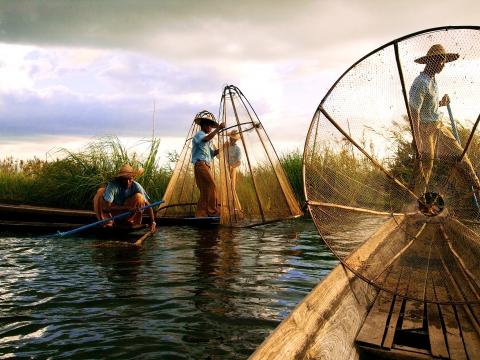
Photo courtesy of Chang Chien-Chi/Magnum photos
The second exhibition, Burmese Days, is on view at Chi-Wen Gallery (其玟畫廊). It presents about a dozen color photographs taken during Chang’s travels throughout Myanmar, as well as a video installation meant to give viewers a taste of the many contradictions within Burmese society. Both exhibits are based on photographic essays shot for National Geographic. Though the exhibits are at different venues, they are thematically linked. The works on display document the poverty afflicting the majority of people living in these repressive countries and the tenacity of the human spirit in the face of oppression.
What is striking about both series is the physical absence of what George Orwell called Big Brother. Sure, there are the monumental edifices built by and for these dictators — the military junta’s lavish new capital in Naypyidaw, or Pyongyang’s shrines built for the “Great Leader” Kim Il-sung and “Dear Leader” Kim Jong-il. But for the most part, Chang’s subject matter is the average person struggling to make it through another day.
Burmese Days, for example, features several psychologically penetrating images of democracy activist Aung San Suu Kyi. But the faces of the generals who rule over Myanmar with an iron fist are nowhere to be found. The same series includes photos of people living with HIV and AIDS, farmers, fishermen and monks, all rendered with Chang’s exceptional sense of geometric composition, but nothing of the wealthy ruling class. There are photos of the Kachin Independence Army, but nothing depicting Myanmar’s official military apparatus.
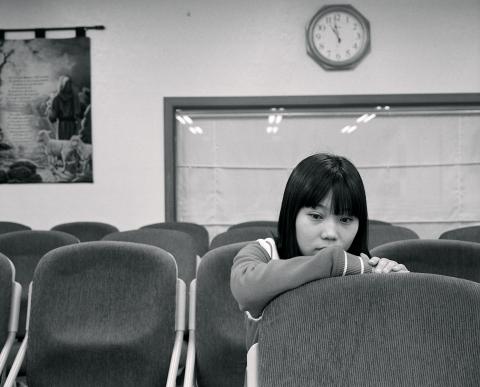
Photo courtesy of Chang Chien-Chi/Magnum photos
Escape From North Korea shows a 2008 picture of a defector, the young woman’s despondent face looking away from the camera; linked to this shot is a black-and-white photo of a socialist realist painting of Kim Jong-il and Kim Il-song rendered as though they are deities.
Burmese Days and Escape From North Korea contrast Chang’s earlier work — the portraits of shackled mental patients in The Chain, for example, or his sardonic look at Taiwan’s wedding industry in I Do, I Do, I Do and Double Happiness — in that he is no longer examining an institution within society, but society itself.
Taipei Times: What is the backstory of Burmese Days, the gallery exhibit based on Burma: Inside the Land of Shadows?
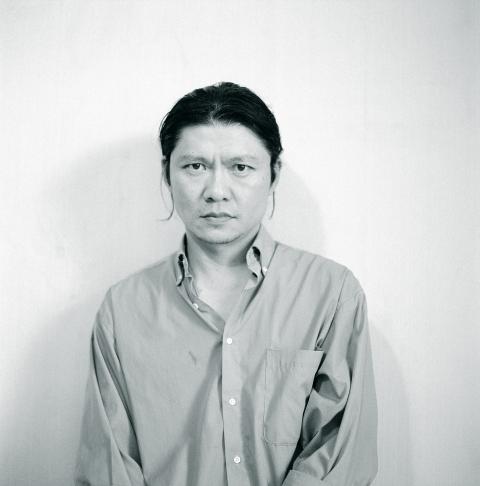
Photo courtesy of Alberto Buzzola
Chang Chien-chi: After completing Escape From North Korea, National Geographic asked me where I would like to go next, and I said Burma. Initially my proposal was to follow the route George Orwell took when he was a policeman in upper and lower Burma — but from the perspective of present-day Burma as a police state. But somehow the idea of following the route of George Orwell was not well received but the idea of Burma as a story was positively approved, thus the journey through the Land of Shadows began.
TT: Had you already visited Burma before you started putting the proposal together?
CCC: I’d been there twice before, but only for short visits. Before the assignment, I did as much research as I could, but also tried to go there without preconceived ideas because I wanted to avoid taking pictures that had been done already.
TT: What, in your opinion, are those “pictures that have been done already,” and how are your images different?
CCC: When I am in areas where tourists are permitted, I try to push the visual boundary. When I am in restricted territories, I refuse to compromise visually. When I was working in Guatemala, a Catholic priest told me: “It’s better to ask for pardon than permission.”
TT: Did you read Orwell’s Nineteen Eighty-Four or Burmese Days as a means of preparing yourself for the project?
CCC: I started reading Nineteen Eighty-Four in 1980 and didn’t finish it until four years later. I didn’t get through Burmese Days.
TT: Did you encounter any run-ins with Big Brother, or the state apparatus?
CCC: Oh yeah, but I operate or function on the basis that I’m being watched. And there are times that they blatantly let you know that you are being watched. This is especially true with the new capital [Naypyidaw]: they want you to know that you are being followed. [The authorities] have succeeded in manufacturing this feeling that you are being watched; it’s ubiquitous. It’s most obvious in front of Aung San Suu Kyi’s residence and the National League of Democracy office.
TT: Did you manage to photograph any of these secret police, or “little brothers working for Big Brother,” as you have called them?
CCC: I managed to take some pictures, but they are more informative than evocative. In the end, those pictures were not used for publication or in the exhibition.
TT: Is being watched by the state police something that you’ve grown used to in your professional work?
CCC: No, it’s something that I could never get used to.
TT: You grew up in Taiwan during the Martial Law era. Did these early experiences help you gain greater insight into Burma?
CCC: There were times when I was in Burma and it was kind of deja vu … Did it help? I don’t know. It did reinforce [the fact] that they are watching.
TT: What is the underlying reason for choosing the projects on North Korean defectors and Burma?
CCC: You mean besides the fact that they were assignments? I see there is something that I feel connected to — so much so that I can continue after the assignment is finished. Both projects [Burma: Inside the Land of Shadows and Escape From North Korea] share one thing in common, which is uncertainty in a repressive state. We don’t know if we are going to have access. We don’t know what is going to happen next. But one thing is certain: you have to assume that you are being monitored and listened to, and then work from there.
TT: Is access just an issue with Burma and North Korea, or is this a more general problem that you’ve experienced?
CCC: It’s in a more general sense. It’s the omnipresence of images. People are more cautious because they don’t know where this is going to appear. Overall it’s getting tougher with sensitive or touchy subjects and/or subject matters.
TT: How do you compensate for that?
CCC: Patience, patience, patience. Move with caution. If I don’t accomplish it this time then I will return. But that is a luxury because most publications will not give this kind of support. If it’s my own project, then I would for sure continue out of my own pocket.
TT: One thing that seems to differentiate Burma: Inside the Land of Shadows and Escape From North Korea from earlier projects, is that the links between their subject matter is less obvious.
CCC: If you look at The Chain, for example, as both a simile and a metaphor, there is a relationship: there is bondage, there is tradition or there is obligation. You see the people who come together [by choice], like in I Do, I Do, I Do, [while in] others it is not so clear, as in Double Happiness. And then you see people in China Town that, yes, they were together but they are also far apart. But even in Escape From North Korea, it’s still there. Once settled in South Korea, the defectors still want to get their family members out. That’s sort of their goal. Trying to reconnect this broken link. But it’s not so much so in Burma — at least for now.
TT: In a broader sense, what links all these different projects?
CCC: It’s difficult to put into words. It’s all very personal. They were sort of self-developed over time to the point where [each] is a link that not only exists, but is re-defined over time.
This interview has been edited and condensed.
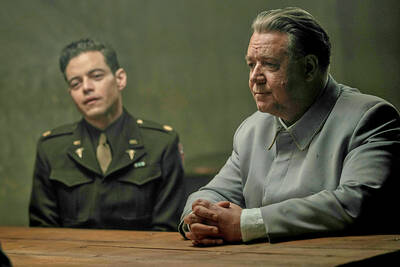
The Nuremberg trials have inspired filmmakers before, from Stanley Kramer’s 1961 drama to the 2000 television miniseries with Alec Baldwin and Brian Cox. But for the latest take, Nuremberg, writer-director James Vanderbilt focuses on a lesser-known figure: The US Army psychiatrist Douglas Kelley, who after the war was assigned to supervise and evaluate captured Nazi leaders to ensure they were fit for trial (and also keep them alive). But his is a name that had been largely forgotten: He wasn’t even a character in the miniseries. Kelley, portrayed in the film by Rami Malek, was an ambitious sort who saw in

It’s always a pleasure to see something one has long advocated slowly become reality. The late August visit of a delegation to the Philippines led by Deputy Minister of Agriculture Huang Chao-ching (黃昭欽), Chair of Chinese International Economic Cooperation Association Joseph Lyu (呂桔誠) and US-Taiwan Business Council vice president, Lotta Danielsson, was yet another example of how the two nations are drawing closer together. The security threat from the People’s Republic of China (PRC), along with their complementary economies, is finally fostering growth in ties. Interestingly, officials from both sides often refer to a shared Austronesian heritage when arguing for
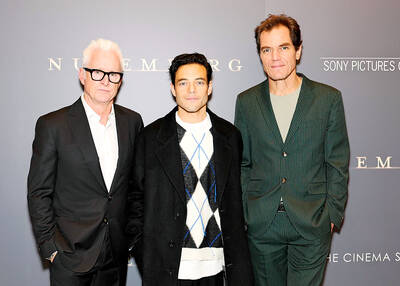
Among the Nazis who were prosecuted during the Nuremberg trials in 1945 and 1946 was Hitler’s second-in-command, Hermann Goring. Less widely known, though, is the involvement of the US psychiatrist Douglas Kelley, who spent more than 80 hours interviewing and assessing Goring and 21 other Nazi officials prior to the trials. As described in Jack El-Hai’s 2013 book The Nazi and the Psychiatrist, Kelley was charmed by Goring but also haunted by his own conclusion that the Nazis’ atrocities were not specific to that time and place or to those people: they could in fact happen anywhere. He was ultimately
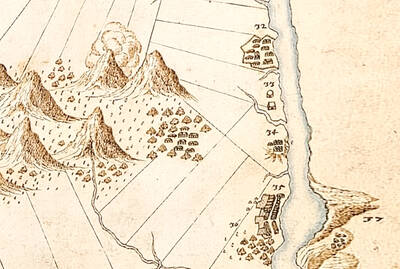
Nov. 17 to Nov. 23 When Kanori Ino surveyed Taipei’s Indigenous settlements in 1896, he found a culture that was fading. Although there was still a “clear line of distinction” between the Ketagalan people and the neighboring Han settlers that had been arriving over the previous 200 years, the former had largely adopted the customs and language of the latter. “Fortunately, some elders still remember their past customs and language. But if we do not hurry and record them now, future researchers will have nothing left but to weep amid the ruins of Indigenous settlements,” he wrote in the Journal of